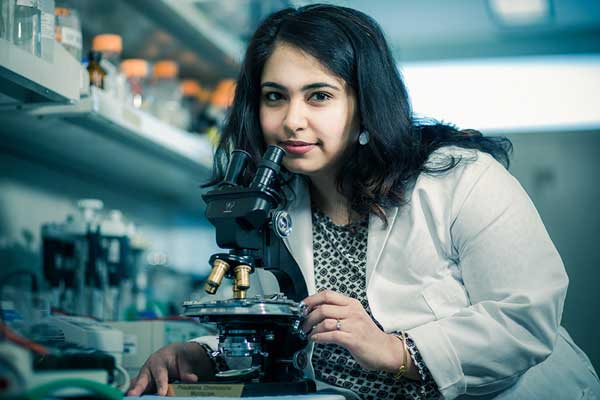
Investigating Novel Genetic Risk Factors for Hereditary Renal Cancer
-
Renal cell cancer (RCC) is among the more commonly diagnosed cancers in individuals. Hereditary renal cancers make up approximately 3-5% of renal cell cancers. Some genetic mutations have been identified in families and have been associated with high levels of inherited risk. The seven known renal cancer genes--VHL, MET, FLCN, TSC1, TSC2, FH and SDH--are involved in cellular metabolism, which is a chain of chemical reactions that maintain life. Other genes are involved in DNA damage response and repair; these genes protect our genome against genotoxic insults, which can cause mutations and cancer.

A photograph of Dr. Sanjeevani Arora, PhD, holding a microscope close to her and looking up at the camera. However, despite this progress, the majority of hereditary renal cancer cases remain genetically undefined. It is likely that there are other genes that present low-to-moderate risk, fall under similar pathways like the high-risk genes and contribute towards inherited genetic risk. In a new study at Fox Chase Cancer Center, Sanjeevani Arora, PhD along with Mary Daly, MD director of the Risk Assessment Program, and other researchers have examined the genetic basis of hereditary renal cell cancer of genetically undefined cases.
The study has analyzed 25 early-onset familial RCC cancer cases from Risk Assessment Program families utilizing Next-Generation Sequencing technology to study genetic changes. The investigators studied the entire network of genes that are involved in cellular metabolism, DNA damage response and repair, and genes known to be involved in renal disease. Through sequencing, novel or rare germline variants (inherited genetic alterations) were identified, and functional studies are being performed to confirm genomic findings. Further studies could explain novel molecular factors, which may help predict risk within families and improve screening and diagnosis.
